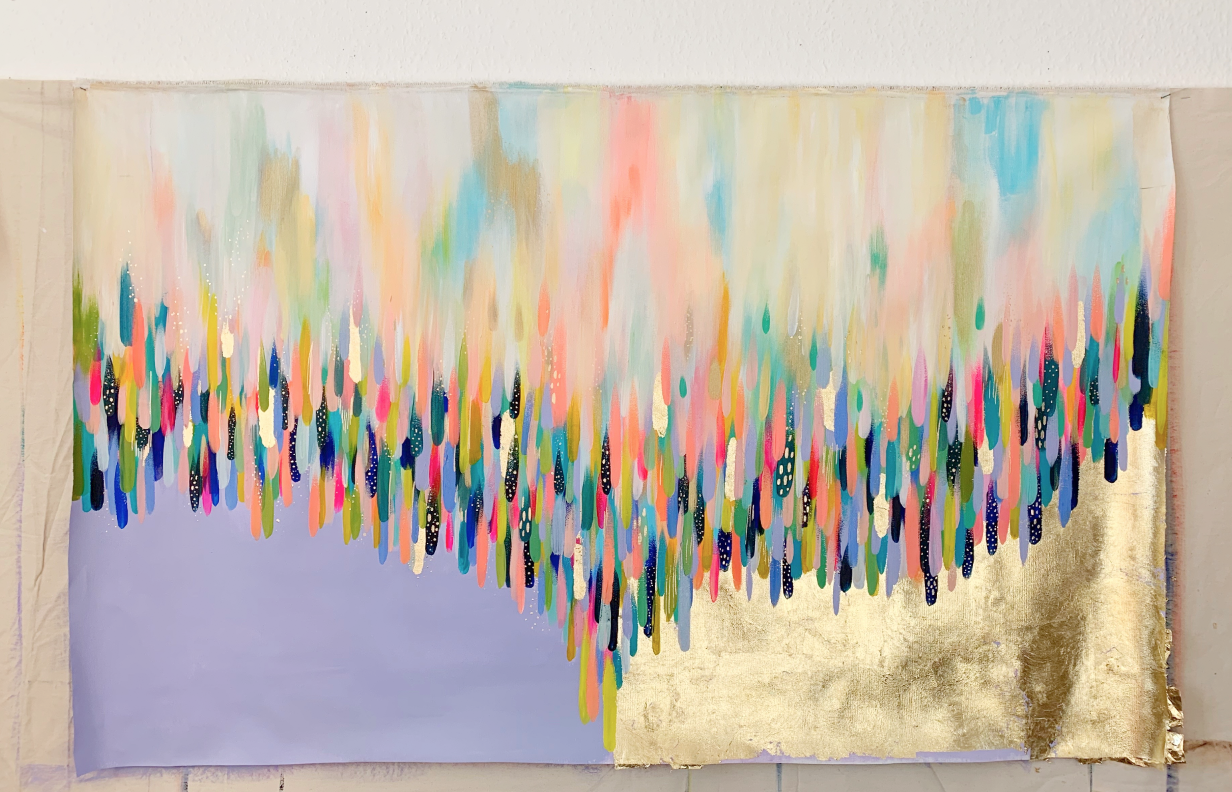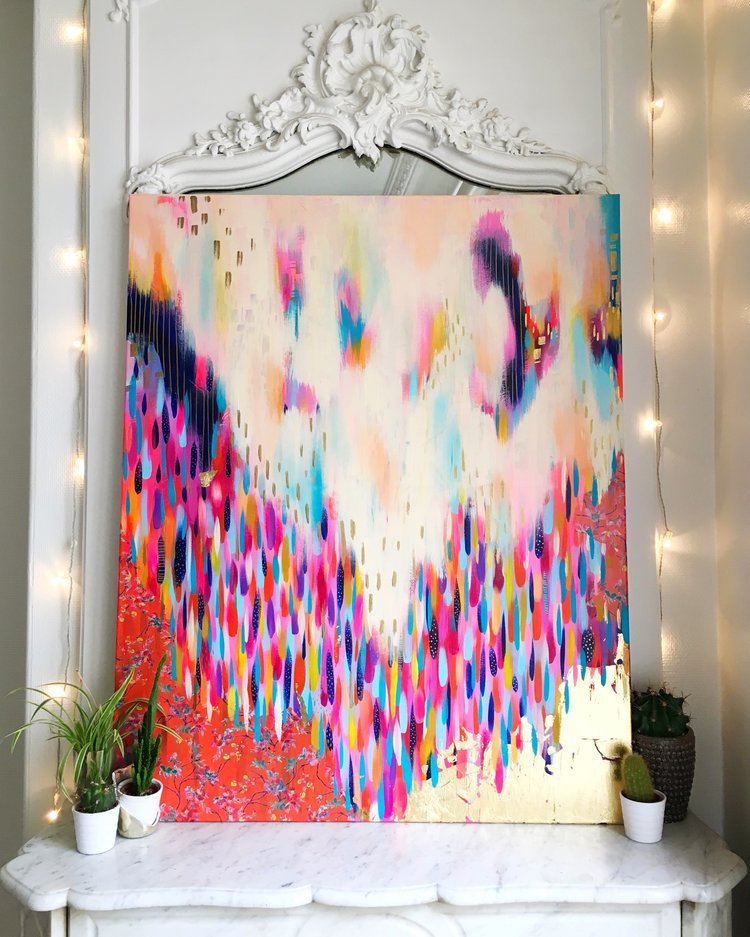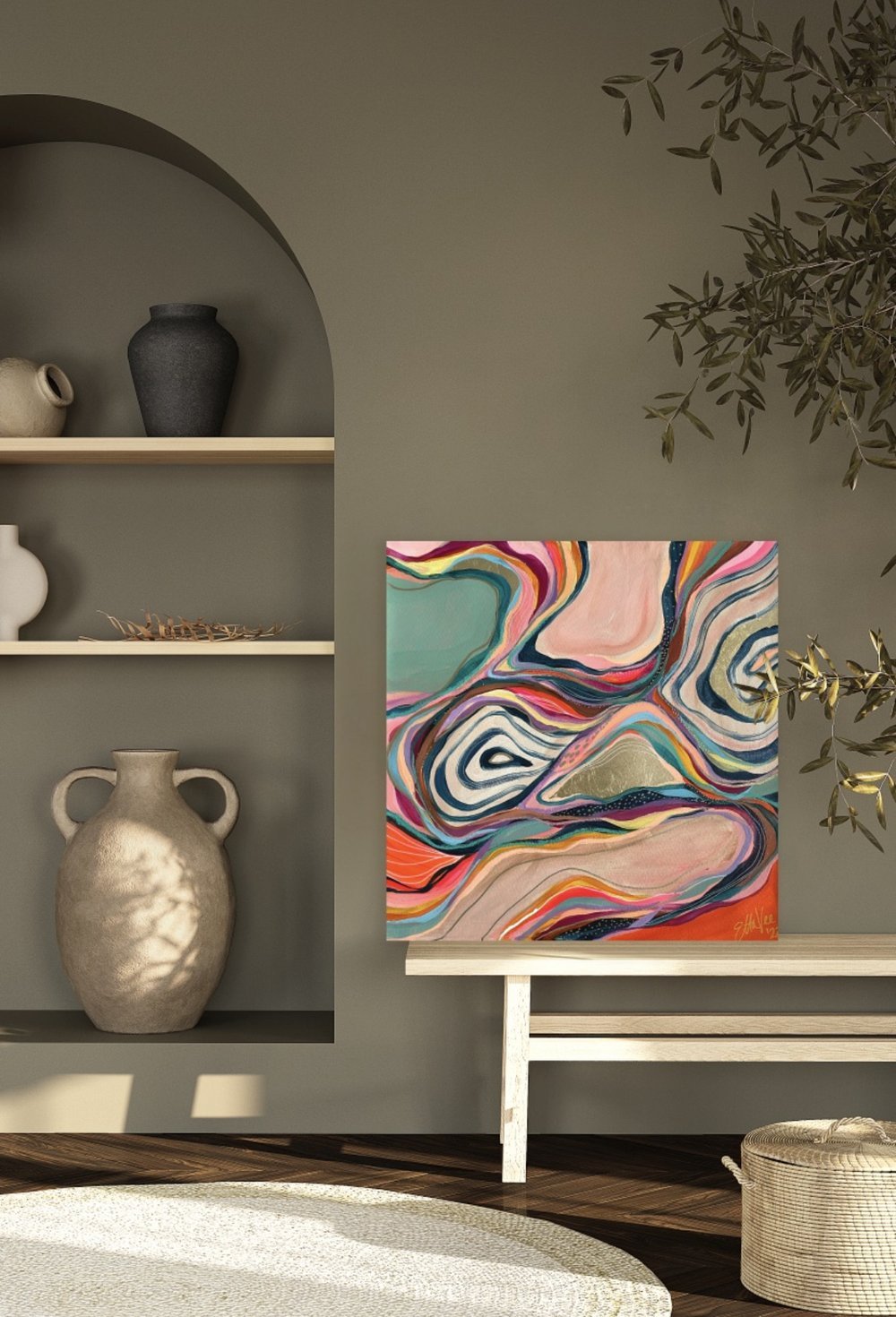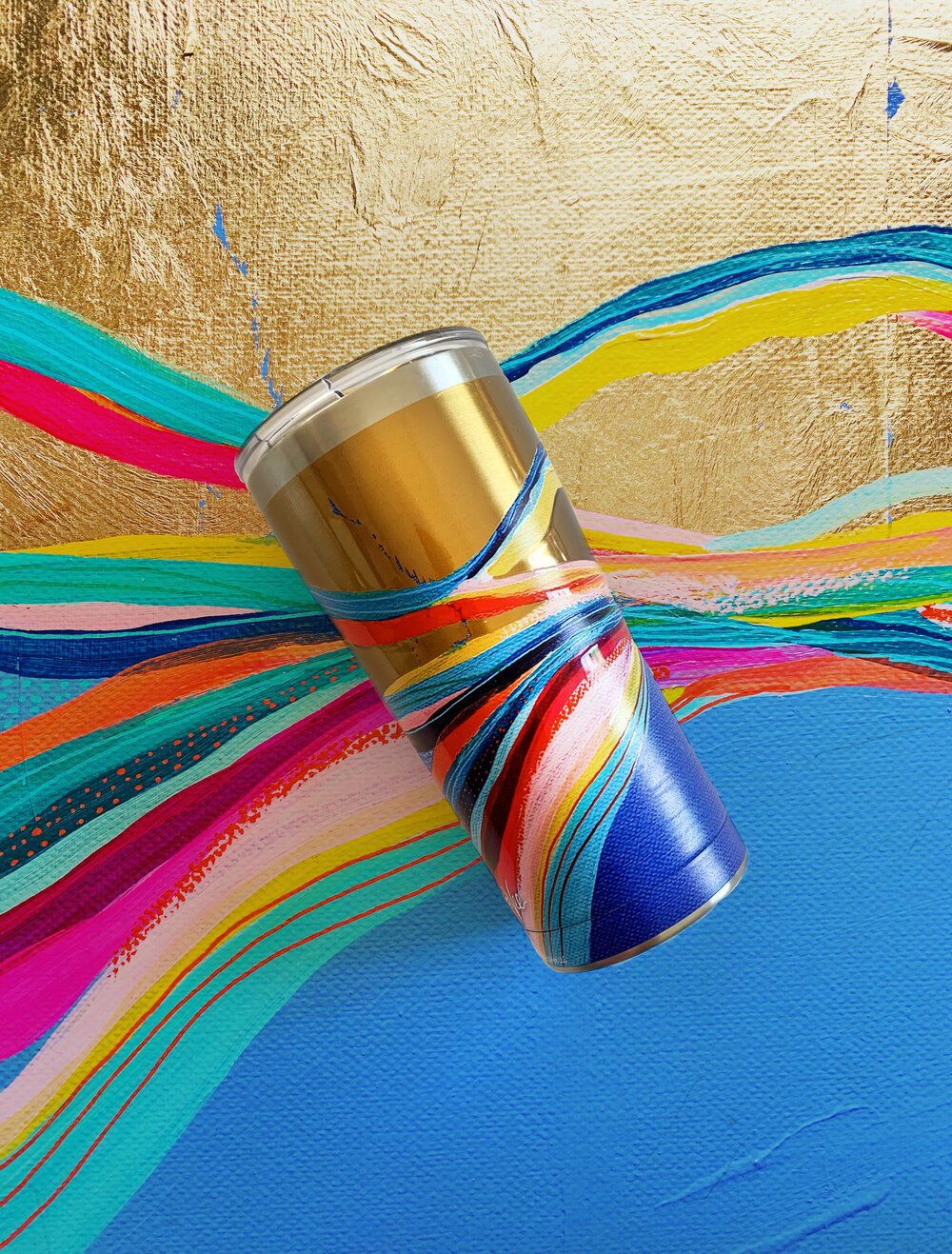How Much Should I Sell My Paintings For?
If you’ve ever found yourself asking “How much should I sell my paintings for?” You’re not alone! One of the biggest hurdles new artists face is trying to figure out how to price their artwork. This blog post will cover tips for how to price your original artwork and a pricing formula that I used when I was first starting out. I hope this post will help demystify the process and encourage you to charge what you’re worth!
Why Your Mindset Matters
Artwork pricing can be a really tricky thing for new artists since art is such a personal endeavor. It can feel scary to have to put a price on something that you created and put your heart into.
Many new artists worry that if they price something too high and no one buys it that it will feel like a personal rejection. So lots of people stay stuck in imposter syndrome and price their artwork too low as a result.
My first tip for pricing your artwork is to work on your mindset.
You can’t wait for someone else to say your art is valuable in order to believe that it is. You have to believe in your work and your value first. When you stand behind your art, collectors will believe in its value as well.
Artists deserve to be paid well. Lots of time, energy, and love goes into creating original art, so don’t discount yourself.
Think of a service-based profession – if you take your car in to get serviced, you’re not just paying for the parts and the end result of the repair, you’re also paying for the time and effort that goes into making the fix.
Consider your art in the same way. A collector is not just paying for the final piece that goes on the wall. They’re paying for your skill, your time, your creativity, and your thoughtfulness. Respect your craft and price your artwork accordingly.
It takes some time to work through imposter syndrome at the beginning of your art career. I still experience it even to this day!
But I’ve learned techniques for moving past it. Try using positive affirmations like “My work is of high value”, “My art brings joy to my collectors and beauty to their homes”, or “I deserve to be paid well for the art I create”.
You might feel a little silly repeating these to yourself at first, but over time you’ll start to believe what you’re saying and it will build your confidence in how you’re pricing your work.
Another trick for building your confidence is to look for evidence that your work is of high value. Even if you’ve never sold a painting, think about a time that you got a compliment on your work on social media, or when a friend or family member told you how impressed they were with your art.
It doesn’t have to be monetary evidence to boost your confidence. Start collecting little moments like this that you can think back to when you’re feeling discouraged. They’ll help remind you just how valuable your work is!
The Value of Original Art
When thinking about the value of your work, create a story about its value that goes beyond money.
In my case, my mission is to bring more color to the world. The value in that is that it makes people happy and brings a sense of joy and vibrancy to my collectors and fans.
Maybe your work is calm and serene. Its value would be that it brings a sense of calm and relaxation. Maybe your work is minimal. Its value is that it elevates and brings a level of sophistication to a home.
You get to decide what that value is for you based on your work, your personal values, and your style.
That said, original art is more than just home decor. It’s a luxury item that appreciates over time. Collectors buy artwork for its beauty, but also because it’s an investment. As you price your artwork, remember to increase your prices over time to account for this.
Artwork Pricing Formula
Now it’s time for the juicy details you came here for.
Exactly how much should you charge for your art?
Well, the answer is probably not what you want to hear…It depends. I can’t tell you exactly how much to charge, but there are a few things you can use as a starting point if you’re really not sure what pricing to choose.
A great way to start with pricing your artwork is with a simple formula that I used at the very beginning of my art career:
Width x Height
So if I was selling a 20x20” painting I’d sell it for $400 – basically $1 per square inch. Now keep in mind that this was at the very beginning of my art career. As time has gone on I’ve increased that price, and you should too!
But it’s a great place to start if you’re feeling totally lost with where to price things.
And keep in mind that this is not a one-size-fits-all equation. Use the sizing formula as a jumping-off point, but make adjustments as needed. If you spend a lot of time on your paintings or use really expensive materials you may need to increase the dollar amount per inch.
It can also be helpful to look at artists who are in your same niche and skill level to see what they charge.
No matter what you choose for that dollar amount, the goal is to have a simple equation that you can replicate over and over again. It helps your collectors to get an idea of what prices they can expect at different sizes.
Take Action
One of my best tips is not to get stuck worrying about getting your pricing wrong. If you never list your artwork for sale, you’ll never really know how your audience responds to it. So take the tips you learned in this post, be bold, and choose some prices for your art!
And know that your work is not for everyone. There are people who hate my art. But for every hater, there are many more people out there who love it! The key is to find your ideal buyer who values your work and can’t wait to purchase it.
If you want more tips on how to find your ideal audience, check out this blog post on how to increase your sales by defining your target audience.
How to sell affordable art without devaluing your work
One question I get asked a lot is how to price your artwork if you feel that it’s important to offer art at accessible price points.
The solution I’ve found is art licensing! This will allow you to sell lower-cost items like prints and products at an affordable price so that anyone can afford to have your artwork in their home – no matter their budget! Art licensing has opened up some incredible doors for me and has helped take the EttaVee brand to the next level. If you’re considering art licensing, check out this post with some of my top art licensing tips!
I hope this post helps you feel confident in how you’re pricing your artwork! Always remember that your art is valuable and there is room for YOU and your unique creative voice in this industry!
xo, Jessi
Pin this post for later! 📌
Hover or tap on this image and click the “Save” button on the top left!







